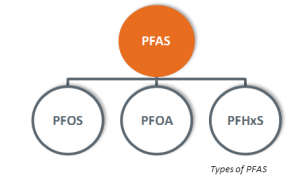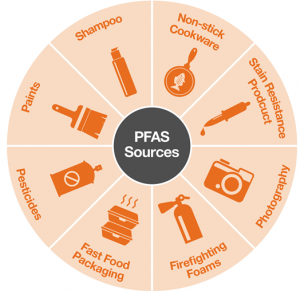Regulatory Update: EPA Announces Plan to Deal with PFAS
Per- and Polyfluoroalkyl Substances (known collectively as PFAS) have been a hot-button issue over the past several years. In 2014, the United States Environmental Protection Agency (EPA) greatly reduced the Health Advisory Levels for the chemicals originally set in 2009. Additionally, Gabreski Air National Guard Base and Hoosick Falls’ water wells, both in New York State, were declared New York State Department of Environmental Conservation (NYSDEC) Superfund Sites due to PFAS-contamination. PFAS are most commonly found in food packaging and products, paints, cleaning products, fire-fighting foams, oil recovery systems, and more.
Due to their strong carbon-fluorine bonds, PFAS are quite persistent in the environment, taking years, decades, or even longer to naturally degrade. Since PFAS refers to a general group of well over a thousand compounds all having different health effects, the need for increased research and action is becoming apparent. Currently, the lack of hazardous substance listings, enforceable numeric standards, and lack of clear, approved sampling methods are major obstacles to controlling PFAS contamination.
On February 14, 2019 the EPA announced the release of EPA guidance documents which will describe measures to detect, monitor, and remediate PFAS in the environment. Within this guidance document, the following actions were presented, with a timeframe to achieve all of these goals by 2022 or sooner:
- Propose a national maximum contaminant level (MCL) for drinking water
- Develop interim groundwater cleanup criteria
- Develop toxicity assessments for previously unassessed PFAS
- Review newly proposed PFAS to determine their toxicity
- Develop pertinent analyses for newly proposed PFAS
- Evaluate potentially unwanted consequences of PFAS remediation
- Ensure that communities whose state or local governments do not have PFAS legislation are not overlooked
- Develop a readily-accessible interactive map to identify contaminated areas
- Develop effective interagency communication strategies to make sure all parties are aware
- Determine which industrial sources may require additional regulation
- Develop testing that can detect PFAS at even lower levels
Walden has a team of engineers and scientists that are familiar with the new EPA PFAS Action Plan and how it may affect your site. Give us a call to discuss your project today!
(516) 624-7200 (NYC – Long Island)
(845) 745-0888 (Hudson Valley Area)
(518) 698-3012 (Capital District Area)


